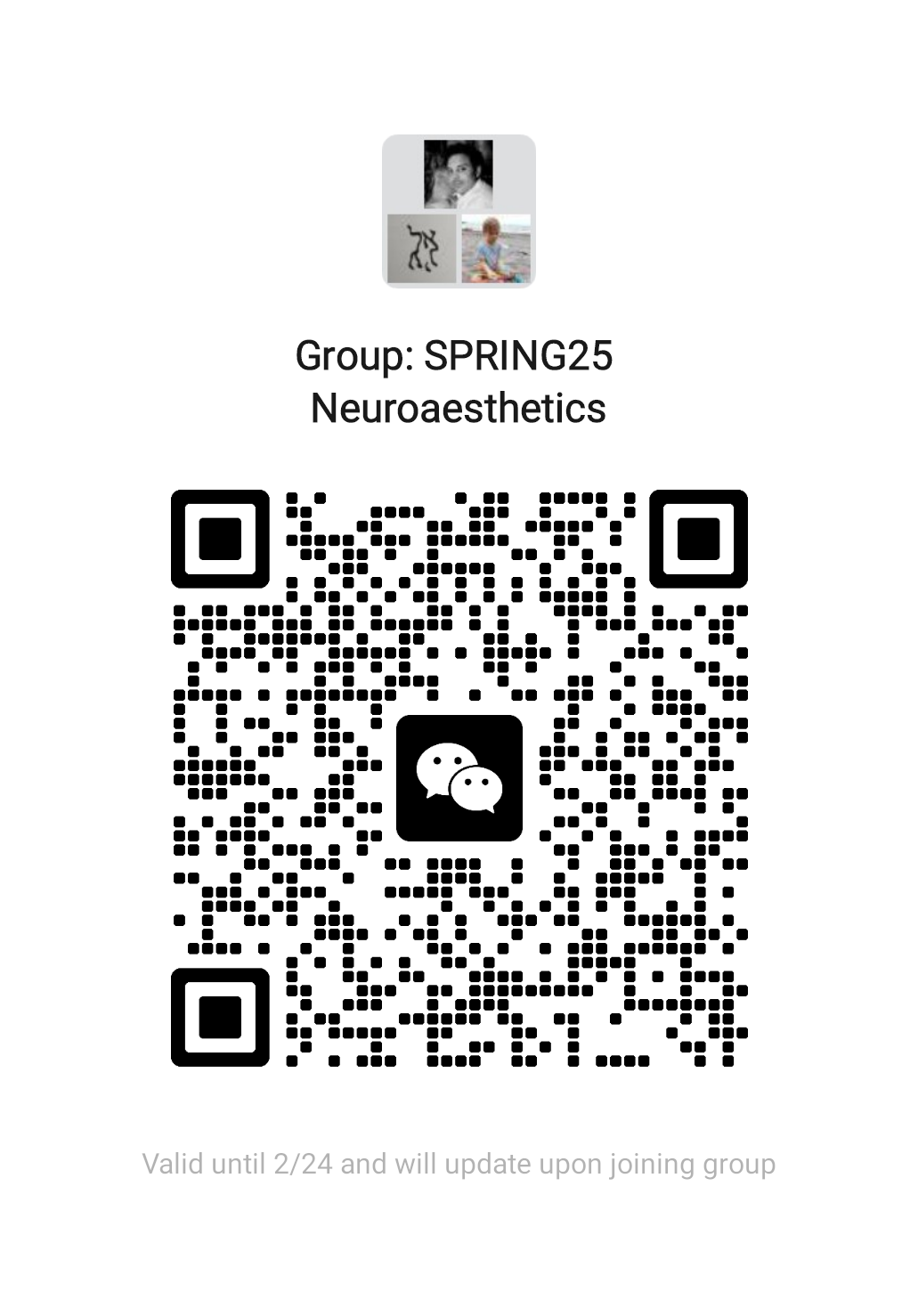Neuroaesthetics and Generative AI in Scientific Visualization: Theories and Applications
This course comprises 24 lectures exploring the theoretical foundations of neuroaesthetics and its practical applications in enhancing scientific visualization and communication. The primary objective is to equip students with the ability to craft compelling visual presentations by integrating cognitive principles of aesthetics into scientific discourse.
Neuroaesthetics examines how the human brain perceives and interprets aesthetic stimuli, including visual structures, artistic compositions, and design elements that influence audience engagement. By leveraging insights from neuroaesthetics, students will learn to create visually effective scientific presentations that facilitate comprehension and retention of complex information. A special focus will be given to the role of generative AI in augmenting scientific representation, with discussions on how aesthetic principles can be embedded into AI-driven visualization techniques.
Neuroaesthetics examines how the human brain perceives and interprets aesthetic stimuli, including visual structures, artistic compositions, and design elements that influence audience engagement. By leveraging insights from neuroaesthetics, students will learn to create visually effective scientific presentations that facilitate comprehension and retention of complex information. A special focus will be given to the role of generative AI in augmenting scientific representation, with discussions on how aesthetic principles can be embedded into AI-driven visualization techniques.

讲师
艾内尔·勒纳
日期
2025年02月19日 至 05月28日
位置
| Weekday | Time | Venue | Online | ID | Password |
|---|---|---|---|---|---|
| 周三,周四 | 09:50 - 11:25 | A3-1a-205 | Zoom 17 | 442 374 5045 | BIMSA |
课程大纲
This series of lectures will cover the following topics:
Introduction to Neuroaesthetics: Overview of the field, its interdisciplinary nature, and its relevance to scientific visualization.
Neural Basis of Aesthetic Perception: Examination of the brain regions involved in aesthetic experience, neurotransmitter functions, and cognitive processing of visual stimuli.
Key Studies in Neuroaesthetics: Analysis of pivotal research, including Gestalt principles, Prof. Ramachandran’s “neural beauty” framework, and Prof. Zeki’s “aesthetic triad” (color, form, and emotional resonance). The course will explore how these theories can inform AI-generated scientific visualizations.
Embodiment and Spatial Cognition: Investigation of perceptual frameworks, including virtual reality applications in scientific communication.
AI Tools for Scientific Visualization: Overview of generative AI software and tools relevant to enhancing scientific representations.
Fundamentals of Prompt Engineering: Core principles of designing AI-generated visual elements aligned with neuroaesthetic concepts.
This course bridges neuroscience, aesthetics, and artificial intelligence, empowering students to create visually engaging scientific content that enhances understanding and audience engagement.
Introduction to Neuroaesthetics: Overview of the field, its interdisciplinary nature, and its relevance to scientific visualization.
Neural Basis of Aesthetic Perception: Examination of the brain regions involved in aesthetic experience, neurotransmitter functions, and cognitive processing of visual stimuli.
Key Studies in Neuroaesthetics: Analysis of pivotal research, including Gestalt principles, Prof. Ramachandran’s “neural beauty” framework, and Prof. Zeki’s “aesthetic triad” (color, form, and emotional resonance). The course will explore how these theories can inform AI-generated scientific visualizations.
Embodiment and Spatial Cognition: Investigation of perceptual frameworks, including virtual reality applications in scientific communication.
AI Tools for Scientific Visualization: Overview of generative AI software and tools relevant to enhancing scientific representations.
Fundamentals of Prompt Engineering: Core principles of designing AI-generated visual elements aligned with neuroaesthetic concepts.
This course bridges neuroscience, aesthetics, and artificial intelligence, empowering students to create visually engaging scientific content that enhances understanding and audience engagement.
听众
Undergraduate
, Advanced Undergraduate
, Graduate
, 博士后
, Researcher
视频公开
公开
笔记公开
公开
语言
英文
讲师介绍
France-Ainel Lerner obtained her Ph.D. in Art and Science from the University of Liège, under the supervision of Steven Laureys and Mylène Botbol-Baum. She was a postdoctoral fellow at the Weizmann Institute of Science and joined BIMSA as an assistant professor in 2023. Her research spans affective neuroscience, digital interactive communication, and extended reality technologies. Her recent work focuses on critical states of consciousness, virtual embodiment, and interactive visual scientific representations.
In addition to her academic career, France-Ainel is an accomplished artist, with exhibitions spanning Europe and the Middle East. Her works explore the complex relationships between consciousness, time, and space, often through the lens of her scientific inquiries.
In addition to her academic career, France-Ainel is an accomplished artist, with exhibitions spanning Europe and the Middle East. Her works explore the complex relationships between consciousness, time, and space, often through the lens of her scientific inquiries.





